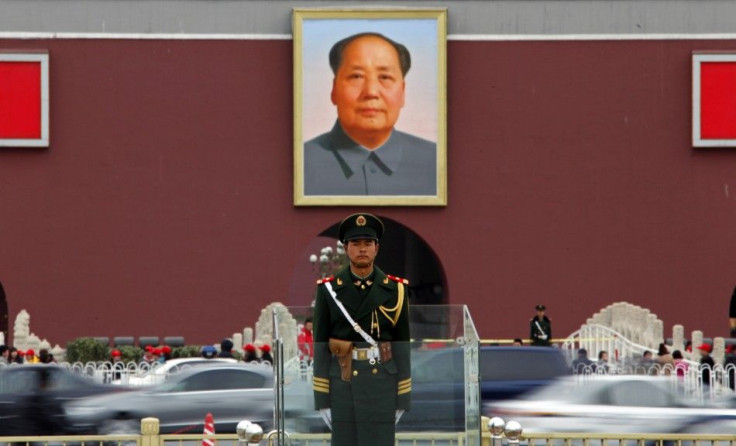What the Chinese Government Learned from Tiananmen Square

Just weeks after a popular uprising swept away the authoritarian regime in Tunisia, launching the Arab Spring, an anonymous poster on the Chinese Web portal Boxun called for protesters to gather on Feb. 20, 2011, in 12 cities across the country to demonstrate support for a so-called “Jasmine Revolution.”
Almost immediately, China’s domestic security apparatus sprung into action. Dozens of activists -- even those with no connection to the protests -- were detained. Plainclothes police officers gathered in Wangfujing, a popular meeting spot in central Beijing, in anticipation. And on the Internet, censors even removed microblog posts containing the word “jasmine” -- a popular flower in China.
The hyperactive response worked. Although a few people gathered in Wangfujing, protesters were outnumbered by the police, journalists, and curious onlookers (including then-U.S. Ambassador Jon Huntsman, who claimed he merely wanted to go to a nearby McDonald's with his family). The gatherings would go on, once a week, for months, but the message was clear. The “Jasmine Revolution” was over before it even started.
On the 25-year anniversary of the Tiananmen Square massacre, the stillborn “Jasmine Revolution” illustrates how the Chinese Communist Party has, in the ensuing quarter-century, taken steps to ensure another Tiananmen Square won’t happen again.
Explanations for the Party’s resilience often point to changes within China, where nonstop economic growth has brought the country prestige and prosperity unimaginable in 1989. But in the post-Tiananmen era, the Chinese government has applied a clear strategy for minimizing internal threats to its rule. And this strategy is working.
Each year, hundreds of thousands of “mass incidents” -- ranging from spontaneous acts of violence to planned, sustained protests -- occur in China. These incidents, which involve a wide range of grievances, can occasionally attract thousands of people. But while demonstrators protest issues of national importance -- such as land seizures and environmental concerns -- the Communist Party has successfully prevented them from spreading to additional cities, often by having government officials intercept traveling activists and escort them back to their place of origin. And while the government typically tolerates online expressions of grievances, censors quickly delete posts or tweets that advocate collective action.
The growth of China’s Internet population, now the world’s largest, has threatened Beijing’s ability to control the media. But in many ways, China’s media today is more restricted than it was in the Tiananmen Square era. In 1988, China Central Television (CCTV) aired a six-part miniseries entitled "River Elegy" that offered deep, sustained critiques of Chinese culture, sparking a nationwide conversation among intellectuals. And as the 1989 demonstrations in Beijing gathered force, the Beijing Youth Daily, a state-run newspaper, published an entire issue in support of democratic change in the country.
In today’s China, this would be unthinkable -- and if anything, the Internet has strengthened, rather than weakened, the Communist Party’s ability to stifle dissent. Beijing’s well-publicized “Net Nanny” blocks Facebook, Twitter, and YouTube, while censoring individual microblog posts for sensitive subjects and words. Information technology has also allowed Beijing to monitor dissidents, like the outspoken artist Ai Weiwei, more effectively. In 2011, police detained Ai en route to the Beijing airport and held him incommunicado for months, on the dubious charge of “economic crimes.” And when riots in Xinjiang, China’s far-western region, led to the deaths of dozens of ethnic Chinese in 2009, Beijing responded by shutting off Internet access in the region for ten months.
The Chinese government has also shown a decreased willingness to deal with dissidents. In May 1989, as hundreds of Tiananmen Square demonstrators launched a hunger strike, then-Premier Li Peng, known as a conservative hard-liner, met with the protest’s student leaders in Zhongnahai, the Communist Party’s government compound. The meeting did not mollify the protesters.
Since then, China has taken a different approach. When Liu Xiaobo, a former Tiananmen Square activist, enraged Chinese authorities in 2008 by spearheading Charter 08, a manifesto calling for gradual political change in China, Beijing imprisoned Liu for 11 years for the crime of “subversion of state power.” Liu’s wife, the activist Liu Xia, who suffers from heart disease, remains under house arrest.
Referring to Liu’s Nobel Peace Prize, which he was awarded in 2010, former U.S. Ambassador Winston Lord, in a recent conference call with reporters, said that the government “not only goes after a Nobel Peace Prize winner -- they go after his sick wife.”
China has come under intense criticism for its suppression of dissent. But events beyond the country’s borders have, if anything, assured the Communist Party that it has taken the right approach. Following the collapse of the Soviet Union in 1991, Beijing commissioned a large study to investigate the root causes, and concluded that Moscow erred in seeking political liberalization before sufficient economic development.
China’s reaction to the turmoil in the Mideast was no more ambiguous. As events unfolded in Tunisia, Egypt, and elsewhere, the Chinese government added “Arab Spring” to the list of prohibited search terms.
© Copyright IBTimes 2024. All rights reserved.





















